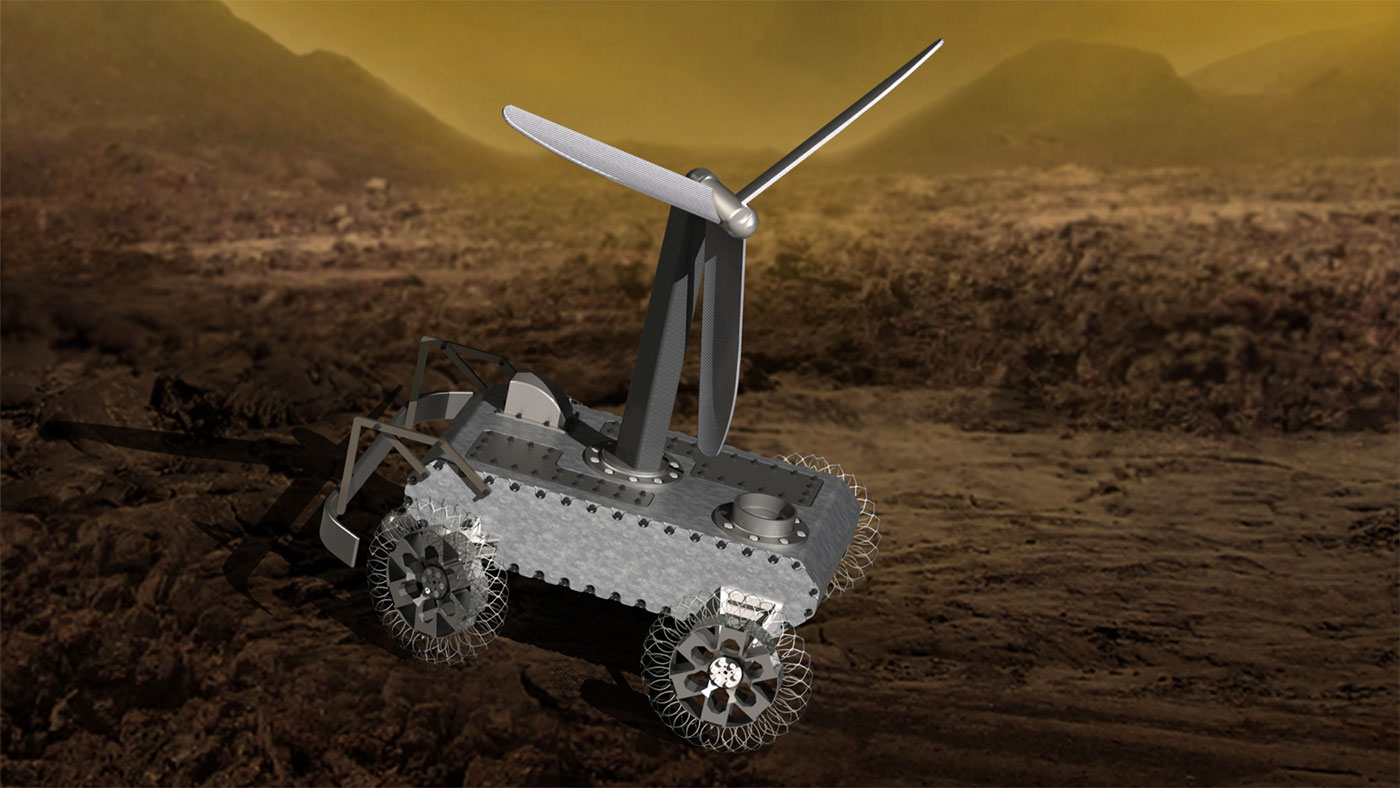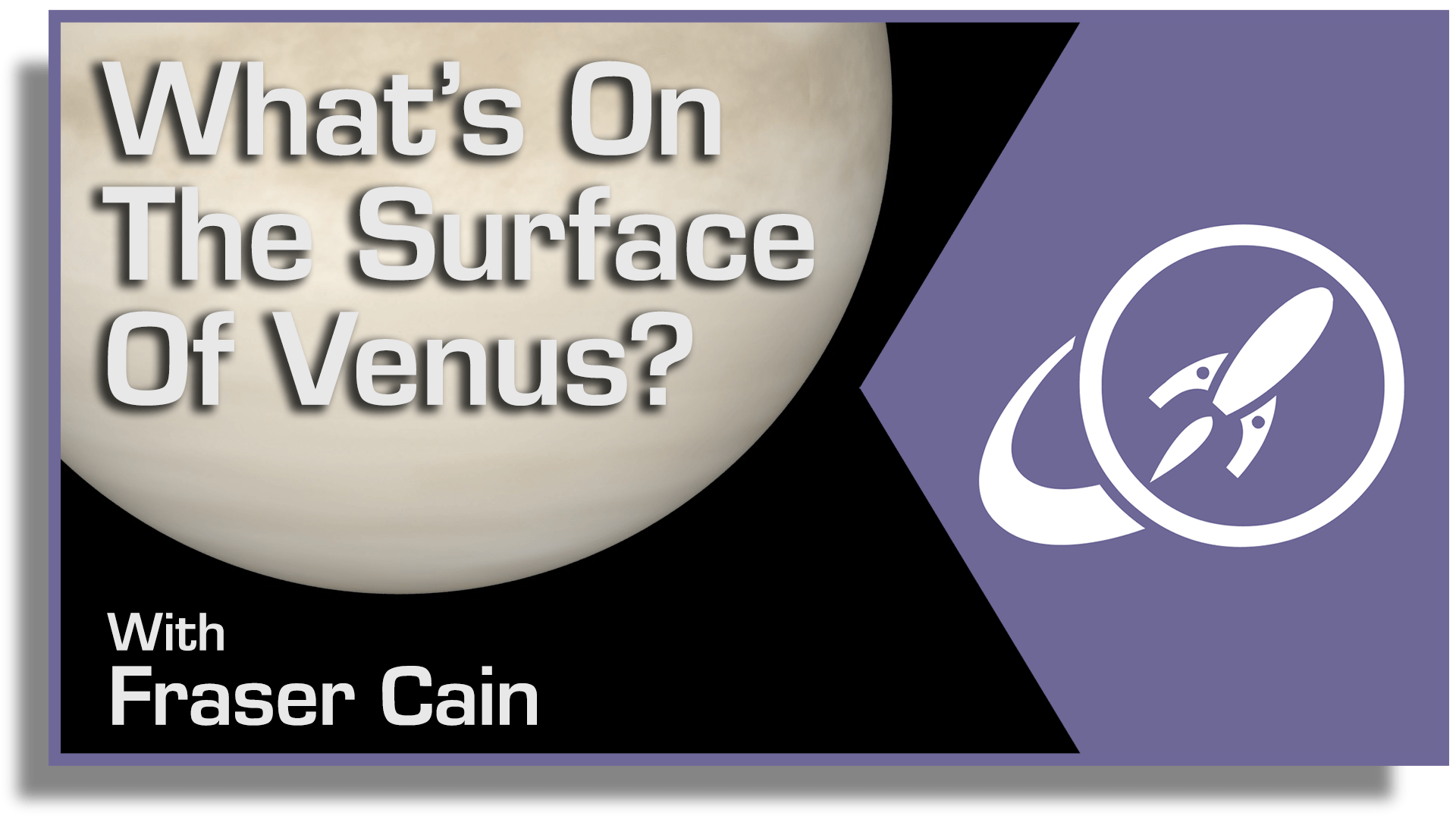The search for life on Venus has a fascinating history. Carl Sagan famously and sarcastically said there were obviously dinosaurs there since a thick haze we couldn’t see through covered the surface. More recently, evidence has pointed to a more nuanced idea of how life might exist on our sister planet. A recent announcement of phosphine in the Venusian atmosphere caused quite a stir in the research community and numerous denials from other research groups. But science moves on, and now some of the researchers involved in the phosphine finding have come up with a series of small missions that will help settle the question more thoroughly – by directly sampling Venus’ atmosphere for the first time in almost 40 years.
Continue reading “A Private Mission to Scan the Cloud Tops of Venus for Evidence of Life”15 Different Ideas for Rovers That Could Explore Venus
NASA and many other space agencies around the world are eager to get back to Venus. And this time around, they want to send missions that can explore the surface for more than a few hours! To this end, engineers at NASA’s Jet Propulsion Laboratory (JPL) and Glenn Research Center (GRC) are investigating “steampunk” concepts and special electronic systems that will allow rovers to work in Venus’ hellish environment.
In February of 2020, NASA also launched a public competition through HeroX to seak ideas for rovers that would be capable of surviving the extreme conditions on Venus’ surface – the “Exploring Hell Challenge“. After months of consideration for all the worthy submissions they received, NASA recently announced that it in addition to three winning concepts, they have selected two additional finalists and ten honorable mentions!
Continue reading “15 Different Ideas for Rovers That Could Explore Venus”What’s on the Surface of Venus?
We’re always talking about Mars here on the Guide to Space. And with good reason. Mars is awesome, and there’s a fleet of spacecraft orbiting, probing and crawling around the surface of Mars.
The Red Planet is the focus of so much of our attention because it’s reasonably close and offers humanity a viable place for a second home. Well, not exactly viable, but with the right technology and techniques, we might be able to make a sustainable civilization there.
We have the surface of Mars mapped in great detail, and we know what it looks like from the surface.
But there’s another planet we need to keep in mind: Venus. It’s bigger, and closer than Mars. And sure, it’s a hellish deathscape that would kill you in moments if you ever set foot on it, but it’s still pretty interesting and mysterious to visit.
Would it surprise you to know that many spacecraft have actually made it down to the surface of Venus, and photographed the place from the ground? It was an amazing feat of Soviet engineering, and there are some new technologies in the works that might help us get back, and explore it longer.
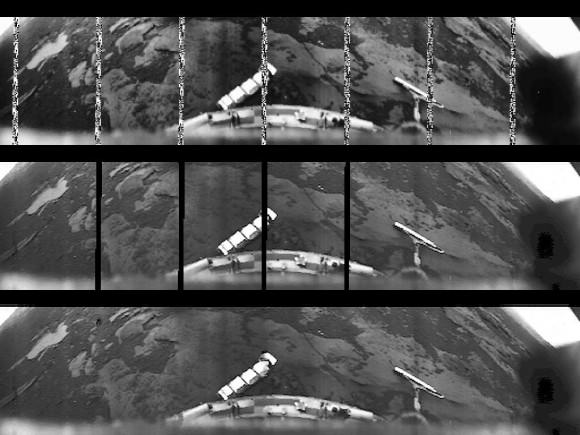
Today, let’s talk about the Soviet Venera program. The first time humanity saw Venus from its surface.
Back in the 60s, in the height of the cold war, the Americans and the Soviets were racing to be the first to explore the Solar System. First satellite to orbit Earth (Soviets), first human to orbit Earth (Soviets), first flyby and landing on the Moon (Soviets), first flyby of Mars (Americans), first flyby of Venus (Americans), etc.
The Soviets set their sights on putting a lander down on the surface of Venus. But as we know, this planet has some unique challenges. Every place on the entire planet measures the same 462 degrees C (or 864 F).
Furthermore, the atmospheric pressure on the surface of Venus is 90 times greater than Earth. Being down at the bottom of that column of atmosphere is the same as being beneath a kilometer of ocean on Earth. Remember those submarine movies where they dive too deep and get crushed like a soda can?
Finally, it rains sulphuric acid. I mean, that’s really irritating.
Needless to say, figuring this out took the Soviets a few tries.
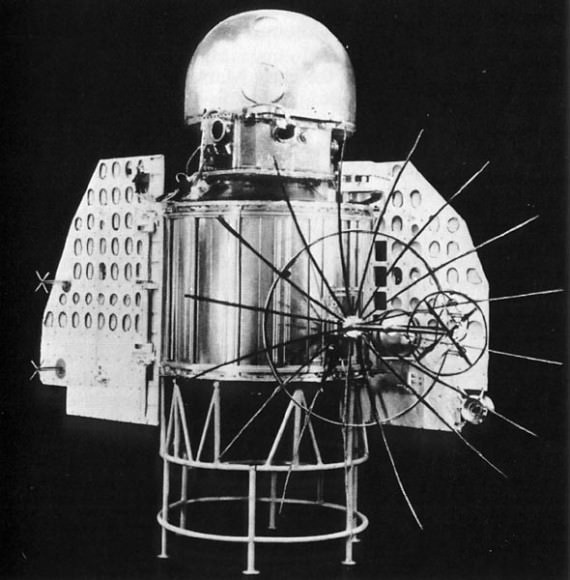
Their first attempts to even flyby Venus was Venera 1, on February 4, 1961. But it failed to even escape Earth orbit. This was followed by Venera 2, launched on November 12, 1965, but it went off course just after launch.
Venera 3 blasted off on November 16, 1965, and was intended to land on the surface of Venus. The Soviets lost communication with the spacecraft, but it’s believed it did actually crash land on Venus. So I guess that was the first successful “landing” on Venus?
Before I continue, I’d like to talk a little bit about landing on planets. As we’ve discussed in the past, landing on Mars is really really hard. The atmosphere is thick enough that spacecraft will burn up if you aim directly for the surface, but it’s not thick enough to let you use parachutes to gently land on the surface.
Landing on the surface of Venus on the other hand, is super easy. The atmosphere is so thick that you can use parachutes no problem. If you can get on target and deploy a parachute capable of handling the terrible environment, your soft landing is pretty much assured. Surviving down there is another story, but we’ll get to that.
Venera 4 came next, launched on June 12, 1967. The Soviet scientists had few clues about what the surface of Venus was actually like. They didn’t know the atmospheric pressure, guessing it might be a little higher pressure than Earth, or maybe it was hundreds of times our pressure. It was tested with high temperatures, and brutal deceleration. They thought they’d built this thing plenty tough.
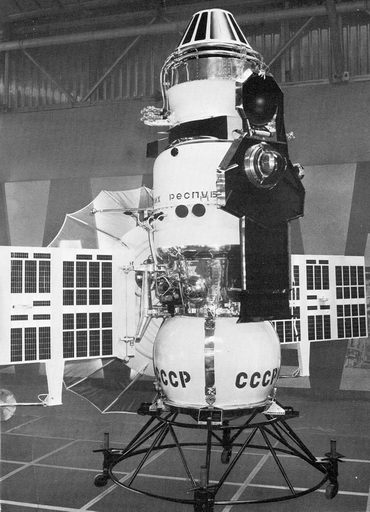
Venera 4 arrived at Venus on October 18, 1967, and tried to survive a landing. Temperatures on its heat shield were clocked at 11,000 C, and it experienced 300 Gs of deceleration.
The initial temperature 52 km was a nice 33C, but then as it descended down towards the surface, temperatures increased to 262 C. And then, they lost contact with the probe, killed dead by the horrible temperature.
We can assume it landed, though, and for the first time, scientists caught a glimpse of just how bad it is down there on the surface of Venus.
Venera 5 was launched on January 5, 1969, and was built tougher, learning from the lessons of Venera 4. It also made it into Venus’ atmosphere, returned some interested science about the planet and then died before it reached the surface.
Venera 6 followed, same deal. Built tougher, died in the atmosphere, returned some useful science.
Venera 7 was built with a full understanding of how bad it was down there on Venus. It launched on August 17, 1970, and arrived in December. It’s believed that the parachutes on the spacecraft only partially deployed, allowing it to descend more quickly through the Venusian atmosphere than originally planned. It smacked into the surface going about 16.5 m/s, but amazingly, it survived, and continued to send back a weak signal to Earth for about 23 minutes.
For the first time ever, a spacecraft had made it down to the surface of Venus and communicated its status. I’m sure it was just 23 minutes of robotic screaming, but still, progress. Scientists got their first accurate measurement of the temperatures, and pressure down there.
Bottom line, humans could never survive on the surface of Venus.
Venera 8 blasted off for Venus on March 17, 1972, and the Soviet engineers built it to survive the descent and landing as long as possible. It made it through the atmosphere, landed on the surface, and returned data for about 50 minutes. It didn’t have a camera, but it did have a light sensor, which told scientists being on Venus was kind of like Earth on an overcast day. Enough light to take pictures… next time.
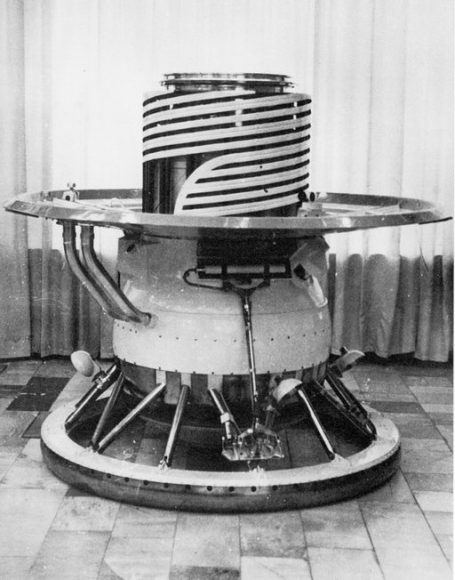
For their next missions, the Soviets went back to the drawing board and built entirely new landing craft. Built big, heavy and tough, designed to get to the surface of Venus and survive long enough to send back data and pictures.
Venera 9 was launched on June 8, 1975. It survived the atmospheric descent and landed on the surface of Venus. The lander was built like a liquid cooled reverse insulated pressure vessel, using circulating fluid to keep the electronics cooled as long as possible. In this case, that was 53 minutes. Venera 9 measured clouds of acid, bromine and other toxic chemicals, and sent back grainy black and white television pictures from the surface of Venus.
In fact, these were the first pictures ever taken from the surface of another planet.

Venera 10 lasted for 65 minutes and took pictures of the surface with one camera. The lens cap on a second camera didn’t release. The spacecraft saw lava rocks with layers of other rocks in between. Similar environments that you might see here on Earth.
Venera 11 was launched on September 9, 1975 and lasted for 95 minutes on the surface of Venus. In addition to confirming the horrible environment discovered by the other landers, Venera 11 detected lightning strikes in the vicinity. It was equipped with a color camera, but again, the lens cap failed to deploy for it or the black and white camera. So it failed to send any pictures home.
Venera 12 was launched on September 14, 1978, and made it down to the surface of Venus. It lasted 110 minutes and returned detailed information about the chemical composition of the atmosphere. Unfortunately, both its camera lens caps failed to deploy, so no pictures were returned. And pictures are what we really care about, right?
Venera 13 was built on the same tougher, beefier design, and was blasted off to Venus on October 30, 1981, and this one was a tremendous success. It landed on Venus and survived for 127 minutes. It took pictures of its surroundings using two cameras peering through quartz windows, and saw a landscape of bedrock. It used spring-loaded arms to test out how compressible the soil was.

Venera 14 was identical and launched just 5 days after Venera 13. It also landed and survived for 57 minutes. Unfortunately, its experiment to test the compressibility of the soil was a botch because one of its lens caps landed right under its spring-loaded arm. But apart from that, it sent back color pictures of the hellish landscape.
And with that, the Soviet Venus landing program ended. And since then, no additional spacecraft have ever returned to the surface of Venus.
It’s one thing for a lander to make it to the surface of Venus, last a few minutes and then die from the horrible environment. What we really want is some kind of rover, like Curiosity, which would last on the surface of Venus for weeks, months or even years and do more science.
And computers don’t like this kind of heat. Go ahead, put your computer in the oven and set it to 850. Oh, your oven doesn’t go to 850, that’s fine, because it would be insane. Seriously, don’t do that, it would be bad.
Engineers at NASA’s Glenn Research Center have developed a new kind of electrical circuitry that might be able to handle those kinds of temperatures. Their new circuits were tested in the Glenn Extreme Environments Rig, which can simulate the surface of Venus. It can mimic the temperature, pressure and even the chemistry of Venus’ atmosphere.
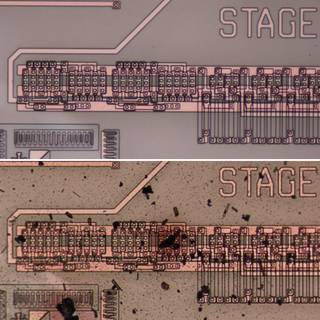
The circuitry, originally designed for hot jet engines, lasted for 521 hours, functioning perfectly. If all goes well, future Venus rovers could be developed to survive on the surface of Venus without needing the complex and short lived cooling systems.
This discovery might unleash a whole new era of exploration of Venus, to confirm once and for all that it really does suck.
While the Soviets had a tough time with Mars, they really nailed it with Venus. You can see how they built and launched spacecraft after spacecraft, sticking with this challenge until they got the pictures and data they were looking for. I really think this series is one of the triumphs of robotic space exploration, and I look forward to future mission concepts to pick up where the Soviets left off.
Are you excited about the prospects of exploring Venus with rovers? Let me know your thoughts in the comments.
What is the Mars Curse?
Last week, ESA’s Schiaparelli lander smashed onto the surface of Mars. Apparently its descent thrusters shut off early, and instead of gently landing on the surface, it hit hard, going 300 km/h, creating a 15-meter crater on the surface of Mars.
Fortunately, the orbiter part of ExoMars mission made it safely to Mars, and will now start gathering data about the presence of methane in the Martian atmosphere. If everything goes well, this might give us compelling evidence there’s active life on Mars, right now.
It’s a shame that the lander portion of the mission crashed on the surface of Mars, but it’s certainly not surprising. In fact, so many spacecraft have gone to the galactic graveyard trying to reach Mars that normally rational scientists turn downright superstitious about the place. They call it the Mars Curse, or the Great Galactic Ghoul.
Mars eats spacecraft for breakfast. It’s not picky. It’ll eat orbiters, landers, even gentle and harmless flybys. Sometimes it kills them before they’ve even left Earth orbit.
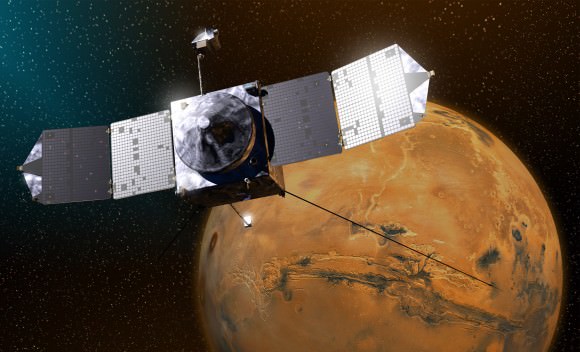
At the time I’m writing this article in late October, 2016, Earthlings have sent a total of 55 robotic missions to Mars. Did you realize we’ve tried to hurl that much computing metal towards the Red Planet? 11 flybys, 23 orbiters, 15 landers and 6 rovers.
How’s our average? Terrible. Of all these spacecraft, only 53% have arrived safe and sound at Mars, to carry out their scientific mission. Half of all missions have failed.
Let me give you a bunch of examples.
In the early 1960s, the Soviets tried to capture the space exploration high ground to send missions to Mars. They started with the Mars 1M probes. They tried launching two of them in 1960, but neither even made it to space. Another in 1962 was destroyed too.
They got close with Mars 1 in 1962, but it failed before it reached the planet, and Mars 2MV didn’t even leave the Earth’s orbit.
Five failures, one after the other, that must have been heartbreaking. Then the Americans took a crack at it with Mariner 3, but it didn’t get into the right trajectory to reach Mars.
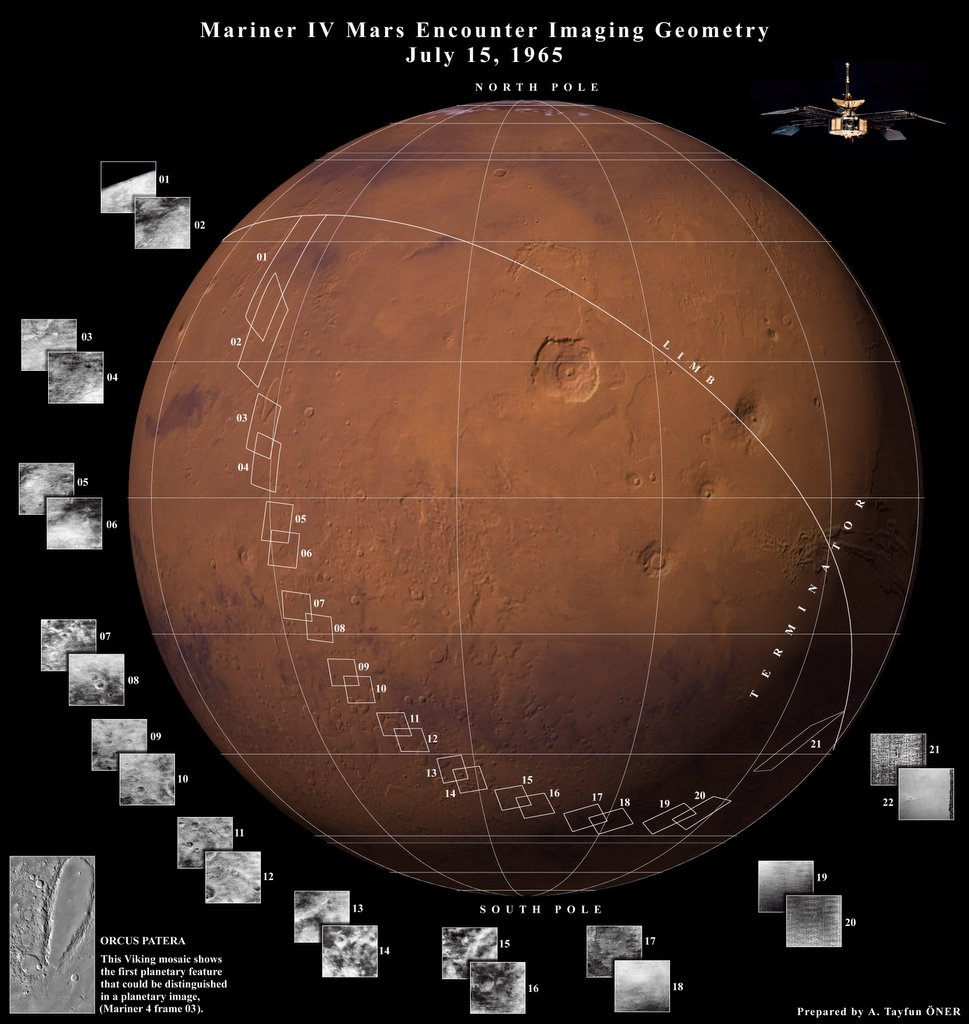
Finally, in 1964 the first attempt to reach Mars was successful with Mariner 4. We got a handful of blurry images from a brief flyby.
For the next decade, both the Soviets and Americans threw all kinds of hapless robots on a collision course with Mars, both orbiters and landers. There were a few successes, like Mariner 6 and 7, and Mariner 9 which went into orbit for the first time in 1971. But mostly, it was failure. The Soviets suffered 10 missions that either partially or fully failed. There were a couple of orbiters that made it safely to the Red Planet, but their lander payloads were destroyed. That sounds familiar.
Now, don’t feel too bad about the Soviets. While they were struggling to get to Mars, they were having wild success with their Venera program, orbiting and eventually landing on the surface of Venus. They even sent a few pictures back.
Finally, the Americans saw their greatest success in Mars exploration: the Viking Missions. Viking 1 and Viking 2 both consisted of an orbiter/lander combination, and both spacecraft were a complete success.
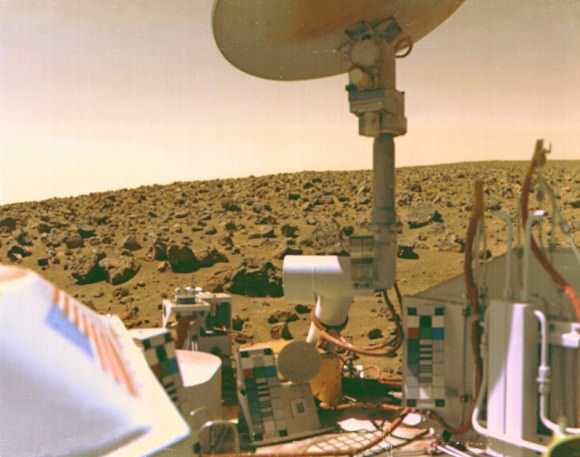
Was the Mars Curse over? Not even a little bit. During the 1990s, the Russians lost a mission, the Japanese lost a mission, and the Americans lost 3, including the Mars Observer, Mars Climate Orbiter and the Mars Polar Lander.
There were some great successes, though, like the Mars Global Surveyor and the Mars Pathfinder. You know, the one with the Sojourner Rover that’s going to save Mark Watney?
The 2000s have been good. Every single American mission has been successful, including Spirit and Opportunity, Curiosity, the Mars Reconnaissance Orbiter, and others.
But the Mars Curse just won’t leave the Europeans alone. It consumed the Russian Fobos-Grunt mission, the Beagle 2 Lander, and now, poor Schiaparelli. Of the 20 missions to Mars sent by European countries, only 4 have had partial successes, with their orbiters surviving, while their landers or rovers were smashed.
Is there something to this curse? Is there a Galactic Ghoul at Mars waiting to consume any spacecraft that dare to venture in its direction?
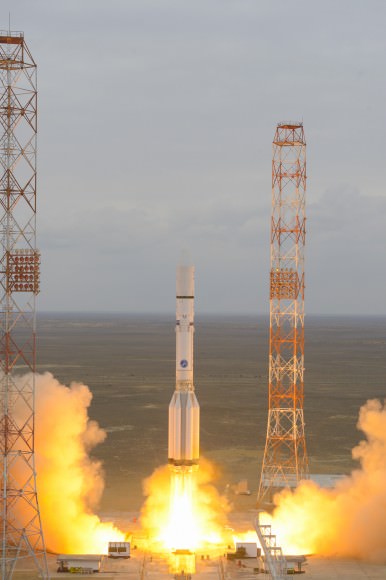
Flying to Mars is tricky business, and it starts with just getting off Earth. The escape velocity you need to get into low-Earth orbit is about 7.8 km/s. But if you want to go straight to Mars, you need to be going 11.3 km/s. Which means you might want a bigger rocket, more fuel, going faster, with more stages. It’s a more complicated and dangerous affair.
Your spacecraft needs to spend many months in interplanetary space, exposed to the solar winds and cosmic radiation.
Arriving at Mars is harder too. The atmosphere is very thin for aerobraking. If you’re looking to go into orbit, you need to get the trajectory exactly right or crash onto the planet or skip off and out into deep space.
And if you’re actually trying to land on Mars, it’s incredibly difficult. The atmosphere isn’t thin enough to use heatshields and parachutes like you can on Earth. And it’s too thick to let you just land with retro-rockets like they did on the Moon.
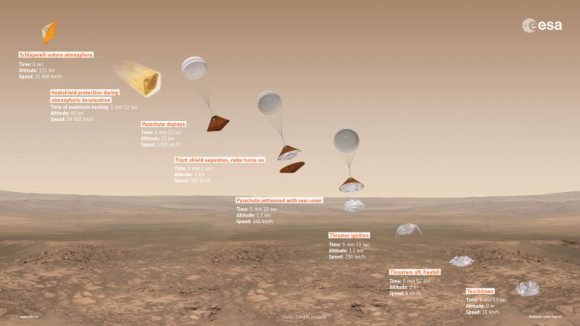
Landers need a combination of retro-rockets, parachutes, aerobraking and even airbags to make the landing. If any one of these systems fails, the spacecraft is destroyed, just like Schiaparelli.
If I was in charge of planning a human mission to Mars, I would never forget that half of all spacecraft ever sent to the Red Planet failed. The Galactic Ghoul has never tasted human flesh before. Let’s put off that first meal for as long as we can.
The Next Generation of Exploration: The DAVINCI Spacecraft
It’s no secret that there has been a resurgence in interest in space exploration in recent years. Much of the credit for this goes to NASA’s ongoing exploration efforts on Mars, which in the past few years have revealed things like organic molecules on the surface, evidence of flowing water, and that the planet once had a denser atmosphere – all of which indicate that the planet may have once been hospitable to life.
But when it comes to the future, NASA is looking beyond Mars to consider missions that will send missions to Venus, near-Earth objects, and a variety of asteroids. With an eye to Venus, they are busy investigating the possibility of sending the Deep Atmosphere Venus Investigation of Noble gases, Chemistry, and Imaging (DAVINCI) spacecraft to the planet by the 2020s.
Led by Lori Glaze of the Goddard Spaceflight Center, the DAVINCI descent craft would essentially pick up where the American and Soviet space programs left off with the Pioneer and Venera Programs in the 1970s and 80s. The last time either country sent a probe into Venus’ atmosphere was in 1985, when the Soviet probes Vega 1 and 2 both orbited the planet and released a balloon-supported aerobot into the upper atmosphere.
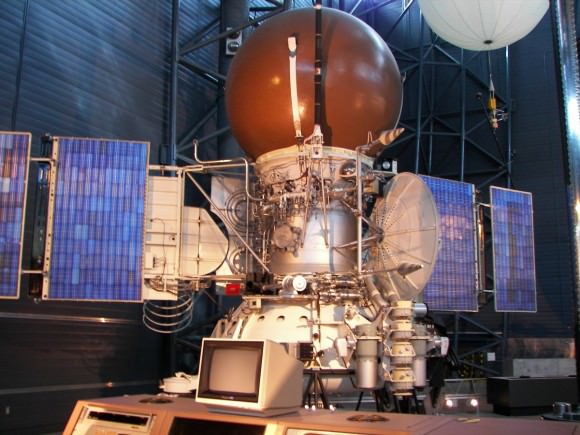
These probes both remained operational for 46 hours and discovered just how turbulent and powerful Venus’ atmosphere was. In contrast, the DAVINCI probe’s mission will be to study both the atmosphere and surface of Venus, and hopefully shed some light on some of the planet’s newfound mysteries. According to the NASA release:
“DAVINCI would study the chemical composition of Venus’ atmosphere during a 63-minute descent. It would answer scientific questions that have been considered high priorities for many years, such as whether there are volcanoes active today on the surface of Venus and how the surface interacts with the atmosphere of the planet.”
These studies will attempt to build upon the data obtained by the Venus Express spacecraft, which in 2008/2009 noted the presence of several infrared hot spots in the Ganis Chasma region near the the shield volcano of Maat Mons (shown below). Believed to be due to volcanic eruptions, this activity was thought to be responsible for significant changes that were noted in the sulfur dioxide (SO²) content in the atmosphere at the time.
What’s more, the Pioneer Venus spacecraft – which studied the planet’s atmosphere from 1978 until its orbit decayed in 1992 – noted a tenfold decreased in the density of SO² at the cloud tops, which was interpreted as a decline following an episode of volcanogenic upwelling from the lower atmosphere.

Commonly associated with volcanic activity here on Earth, SO² is a million times more abundant in Venus’ atmosphere, where it helps to power the runaway greenhouse effect that makes the planet so inhospitable. However, any SO² released into Venus’ atmosphere is also short-lived, being broken down by sunlight within a matter of days.
Hence, any significant changes in SO² levels in the upper atmosphere must have been a recent addition, and some scientists believe that the spike observed in 2008/2009 was due to a large volcano (or several) erupting. Determining whether or not this is the case, and whether or not volcanic activity plays an active role in the composition of Venus’s thick atmosphere, will be central to DAVINCI’s mission.
Along with four other mission concepts, DAVINCI was selected as a semifinalist for the NASA Discovery Program‘s latest calls for proposed missions. Every few years, the Discovery Program – a low-cost planetary missions program that is managed by the JPL’s Planetary Science Division – puts out a call for missions with an established budget of around $500 million (not counting the cost of launch or operation).
The latest call for submissions took place in February 2014, as part of the Discovery Mission 13. At the time, a total of 27 teams threw their hats into the ring to become part of the next round of space exploration missions. Last Wednesday, September 30th, 2015, five semifinalists were announced, one (or possibly two) of which will be chosen as the winner(s) by September 2016.
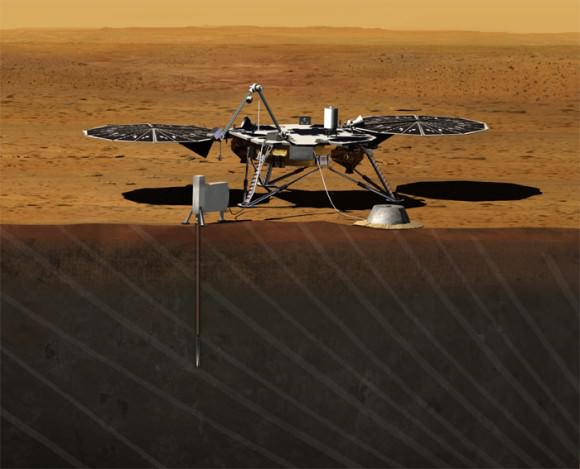
These finalists will receive $3 million in federal grants for detailed concept studies, and the mission (or missions) that are ultimately chosen will be launched by December 31st, 2021. The Discovery Program began back in 1992, and launched its first mission- the Mars Pathfinder – in 1996. Other Discovery missions include the NEAR Shoemaker probe that first orbited an asteroid, and the Stardust-NExT project, which returned samples of comet and interstellar dust to Earth.
NASA’s MESSENGER spacecraft, the planet-hunting Kepler telescope, and the Dawn spacecraft were also developed and launched under the Discovery program. The winning proposal of the Discovery Program’s 12th mission, which was issued back in 2010, was the InSight Mars lander. Set to launch in March of 2016, the lander will touch down on the red planet, deploy instruments to the planet’s interior, and measure its seismic activity.
NASA hopes to infuse the next mission with new technologies, offering up government-furnished equipment with incentives to sweeten the deal for each proposal. These include a supply of deep space optical communications system that are intended to test new high-speed data links with Earth. Science teams that choose to incorporate the laser telecom unit will be entitled to an extra $30 million above their $450 million cost cap.
If science teams wish to send entry probes into the atmospheres of Venus or Saturn, they will need a new type of heat shield. Hence, NASA’s solicitation includes a provision to furnish a newly-developed 3D-woven heat shield with a $10 million incentive. A deep space atomic clock is also available with a $5 million bonus, and NASA has offered to provide xenon ion thrusters and radioisotope heater units without incentives.
As with previous Discovery missions, NASA has stipulated that the mission must use solar power, limiting mission possibilities beyond Jupiter and Saturn. Other technologies may include the NEXT ion thruster and/or re-entry technology.
Interesting Facts About Venus
Venus was once considered a twin to Earth, as it’s roughly the same size and is relatively close to our planet. But once astronomers looked at it seriously in the past half-century or so, a lot of contrasts emerged. The biggest one — Venus is actually a hothouse planet with a runaway greenhouse effect, making it inhospitable to life as we know it. Here are some more interesting facts about Venus.
1. Venus’ atmosphere killed spacecraft dead very quickly:
You sure don’t want to hang around on Venus’ surface. The pressure there is so great that spacecraft need shielding to survive. The atmosphere is made up of carbon dioxide with bits of sulfuric acid, NASA says, which is deadly to humans. And if that’s not bad enough, the temperature at the surface is higher than 470 degrees Celsius (880 degrees Fahrenheit). The Soviet Venera probes that ventured to the surface decades ago didn’t last more than two hours.
2. But conditions are more temperate higher in the atmosphere:
While you still couldn’t breathe the atmosphere high above Venus’ surface, at about 50 kilometers (31 miles) you’ll at least find the same pressure and atmosphere density as that of Earth. A very preliminary NASA study suggests that at some point, we could deploy airships for humans to explore Venus. And the backers suggest it may be more efficient to go to Venus than to Mars, with one large reason being that Venus is closer to Earth.
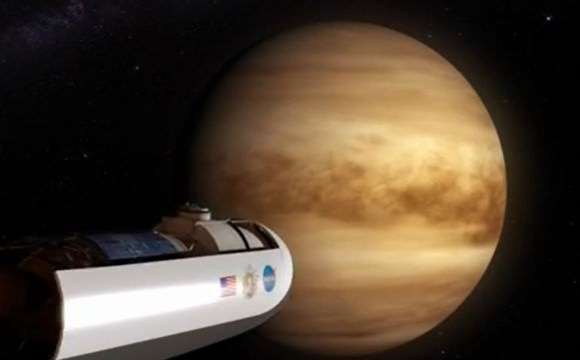
3. Venus is so bright it is sometimes mistaken for a UFO:
The planet is completely socked in by cloud, which makes it extremely reflective to observers looking at the sky on Earth. Its brightness is between -3.8 and -4.8 magnitude, which makes it brighter than the stars in the sky. In fact, it’s so bright that you can see it go through phases in a telescope — and it can cast shadows! So that remarkable appearance can confuse people not familiar with Venus in the sky, leading to reports of airplanes or UFOs.
4. And those clouds mean you can’t see the surface:
If you were to look at Venus with your eyes, you wouldn’t be able to see its surface. That’s because the clouds are so thick that they obscure what is below. NASA got around that problem when it sent the Magellan probe to Venus for exploration in the 1990s. The probe orbited the planet and got a complete surface picture using radar.

5. Venus has volcanoes and a fresh face:
Venus has fresh lava flows on its surface, which implies that volcanoes erupted anywhere from the past few hundred years to the past three million years. What this means is there are few impact craters on the surface, likely because the lava flowed over them and filled them in. While scientists believe the volcanoes are responsible, the larger question is how frequently this occurs.
6. Venus has a bizarre rotation:
Venus not only rotates backwards compared to the other planets, but it rotates very slowly. In fact, a day on Venus (243 days) lasts longer than it takes the planet to orbit around the Sun (225 days). Even more strangely, the rotation appears to be slowing down; Venus is turning 6.5 minutes more slowly in 2014 than in the early 1990s. One theory for the change could be the planet’s weather; its thick atmosphere may grind against the surface and slow down the rotation.
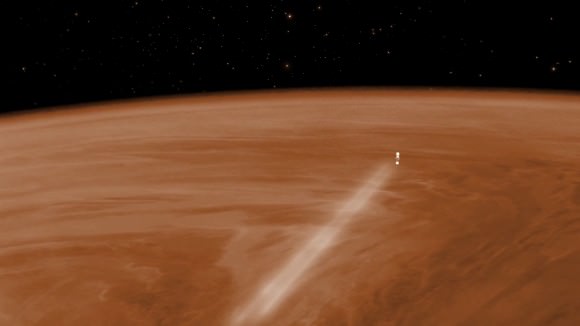
7. Venus has no moons or rings:
The two planets closest to the Sun have no rings or moons, which puts Venus in the company of only one other world: Mercury. Every other planet in the Solar System has one or the other, or in many cases both! Why this is is a mystery to scientists, but they are doing as much comparison of different planets as possible to understand what’s going on.
8. Venus appears to be a spot where spacecraft go to extremes:
We briefly mentioned the Venera probes that landed on the surface, but that’s not the only unusual spacecraft activity at Venus. In 2014, the European Space Agency put an orbiter — that’s right, a spacecraft not designed to survive the atmosphere — into the upper parts of Venus’ dense atmosphere. Venus Express did indeed survive the encounter (before it ran out of gas), with the goal of providing more information about how the atmosphere looks at high altitudes. This could help with landings in the future.
As you can see, Venus is an interesting, mysterious, and extremely hostile world. With such a corrosive atmosphere, such incredible heat, a volcanically-scarred surface, and thick clouds of toxic gas, one would have to be crazy to want to live there. And yet, there are some who believe Venus could be terraformed for human use, or at the very least explored using airships, in the coming generations.
But that’s the thing about interesting places. Initially, they draw their fair share of research and attention. But eventually, the dreamers and adventurers come.


